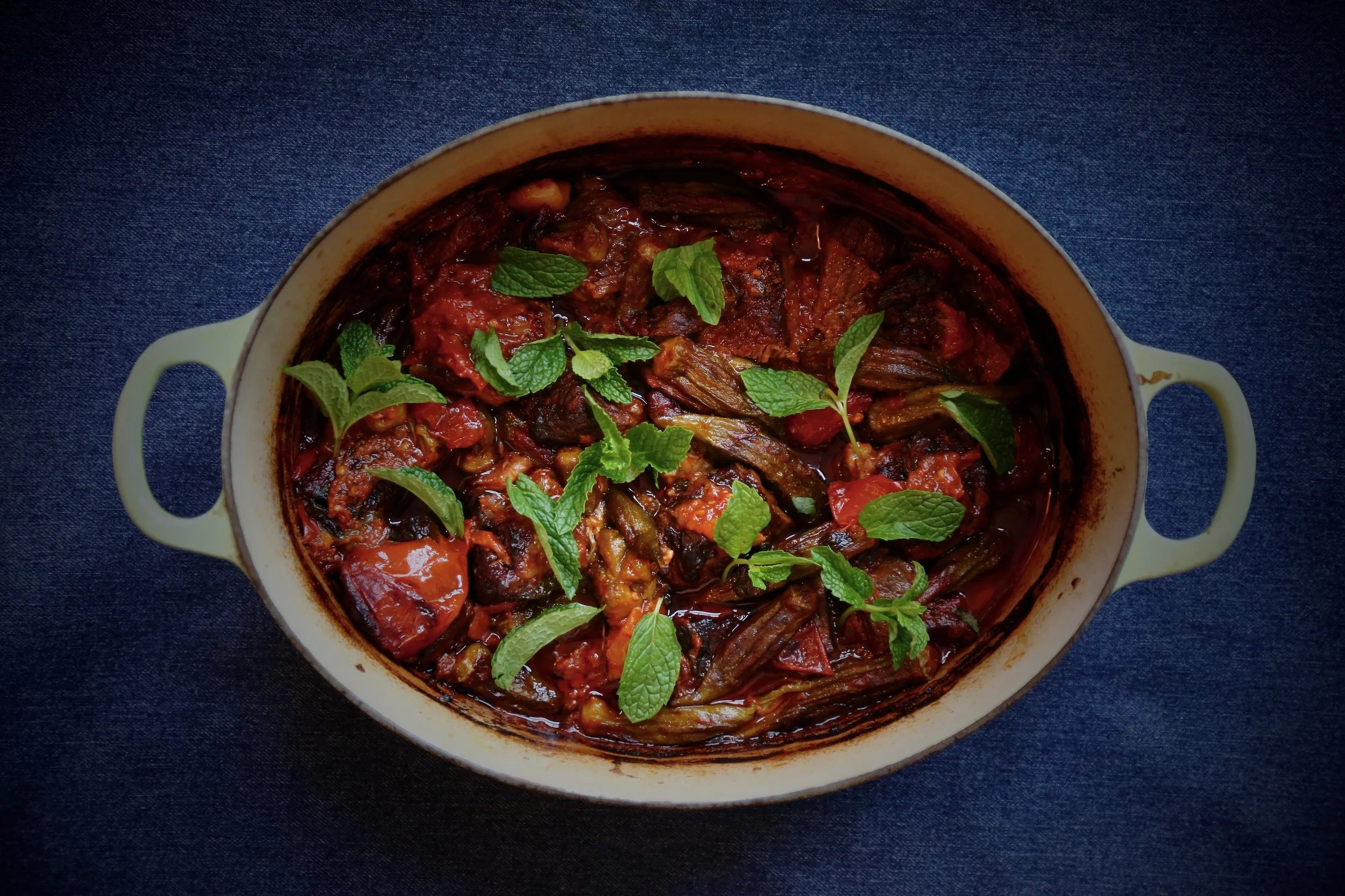The Hungarian Crepe Cake That Survived WWII
Shared by Hean Zeidner Kaspi
Recipe roots: Hungary > Israel > New Jersey
Disguised as a gentile, Martha Roth survived the Holocaust as a teenager by escaping from Slovakia to Hungary. Found out, she was sent to a prison (the same one where Hannah Senesh was held). After the war, she made her way to Israel with no physical tokens of her past, but strong recollections of her mother’s cooking. She settled in Nahariya and became a farmer, as well as a skilled cook and baker for her family.
It was her grandson’s wife, Hean Zeidner Kaspi, though, who became most enamored with Martha’s recipes, particularly with this classic Hungarian cake, which stacks large pancakes atop one another with fillings like chocolate and sugar, or in this case, pecans and vanilla sugar. Martha was always secretive about her recipes, never sharing the exact one with anyone. After her death, Hean tested numerous versions until she recreated the family original, which is the recipe shared below.
Hungarian Layer Cake with Pecans and Vanilla (Csusztatott Palacsinta)
Photo by Dave Katz
Serves: 6 to 8
Time: 30 minutes
Ingredients
For the Filling:
2 cups (7 ounces) raw whole pecans
3 tablespoons vanilla sugar*
For the Pancakes:
¼ cup all-purpose flour
4 tablespoons unsalted butter, melted, plus more for greasing
5 eggs, separated
1 cup whole milk
¼ cup granulated sugar
2 tablespoons vanilla sugar
Confectioners’ sugar, for garnish
Preparation
1. Make the filling: Combine the pecans and vanilla sugar in a food processor. Pulse until the pecans are ground into a fine powder, then transfer to a bowl. This can be done 1 day ahead to let the vanilla infuse with the nuts.
2. Make the pancakes: Whisk together the flour, butter and egg yolks in a medium bowl until smooth, then slowly whisk in the milk to incorporate. Combine the egg whites in a separate bowl with the granulated and vanilla sugar. Using an electric mixer, beat until stiff peaks form, then carefully fold into the flour-and-egg mixture.
3. Heat a greased, 10-inch nonstick skillet over medium heat. Pour ⅔ cup of batter into the pan and swirl to coat the surface evenly. Cook until the pancake has risen and is golden brown on the bottom, 2 to 3 minutes. Using a rubber spatula, carefully transfer the pancake to a platter, cooked-side down. Sprinkle the top, which will still be slightly uncooked, with ⅓ cup of the pecan filling.
4. Repeat the process 5 more times, stacking each pancake on top of the last. For the 6th pancake, flip onto the stack cooked-side up.
5. Let sit for 5 to 10 minutes until the pancakes firm up, then dust with confectioners’ sugar, slice and serve.
*If you cannot find vanilla sugar, combine ½ cup of granulated sugar with the seeds scraped from 1 vanilla bean and the pod itself. This cake is best served immediately; heat leftovers before serving for best results.
A Bissel More...
Jewish Food Society: Can you tell me more about how Martha survived the war?
Hean: She was originally from Slovakia, and she ran away in the night. Her family paid for her to cross the border, and she walked to Hungary to live with her cousin. She spent two years being someone else—someone not Jewish. One day, someone recognized her, and she was sent to a Hungarian jail for having fake papers. She sat together in the same prison as Hannah Senesh.
Did she ever mention where the recipe came from?
I’m not ever going to know at which point she picked it up. After the war, she went back home and there were Christians in her home; there was nothing left, no pictures. She didn’t bring any memory you could touch, any tangible memory [to Israel]. She brought with her the taste and smells of her mother’s cooking; it was a very big deal for her. She always talked about the cooking of her mother (who died in a camp) and how perfect it was.
How often did she make this cake?
They had it every few weeks [in their family]. If you wanted to treat someone or spoil someone, it was made and there was a special dish it was served in. We loved it. If I could name this dish, I would name it a Taste of the Clouds—the texture makes you feel like you are taking a bite of heaven.
Was Martha secretive about her recipes? How did you ultimately get this recipe?
I met my husband when I was 16, and we became very close. Martha really liked me, and she liked my curiosity about family stories and recipes. But she hadn’t really given anyone any recipes as long as she lived. I would nag her: Every time I would ask, she would give a different answer; she never gave quantities. She would say, cook “until it looks right.” I used to compare the versions and find something close to the truth.
After she died last year I felt an urge to preserve her culinary legacy. I made a recipe book, but I didn’t have any recipes to make it with, so I spent three months in the kitchen trying to get to the exact right results. At the end, I made my own little book.






